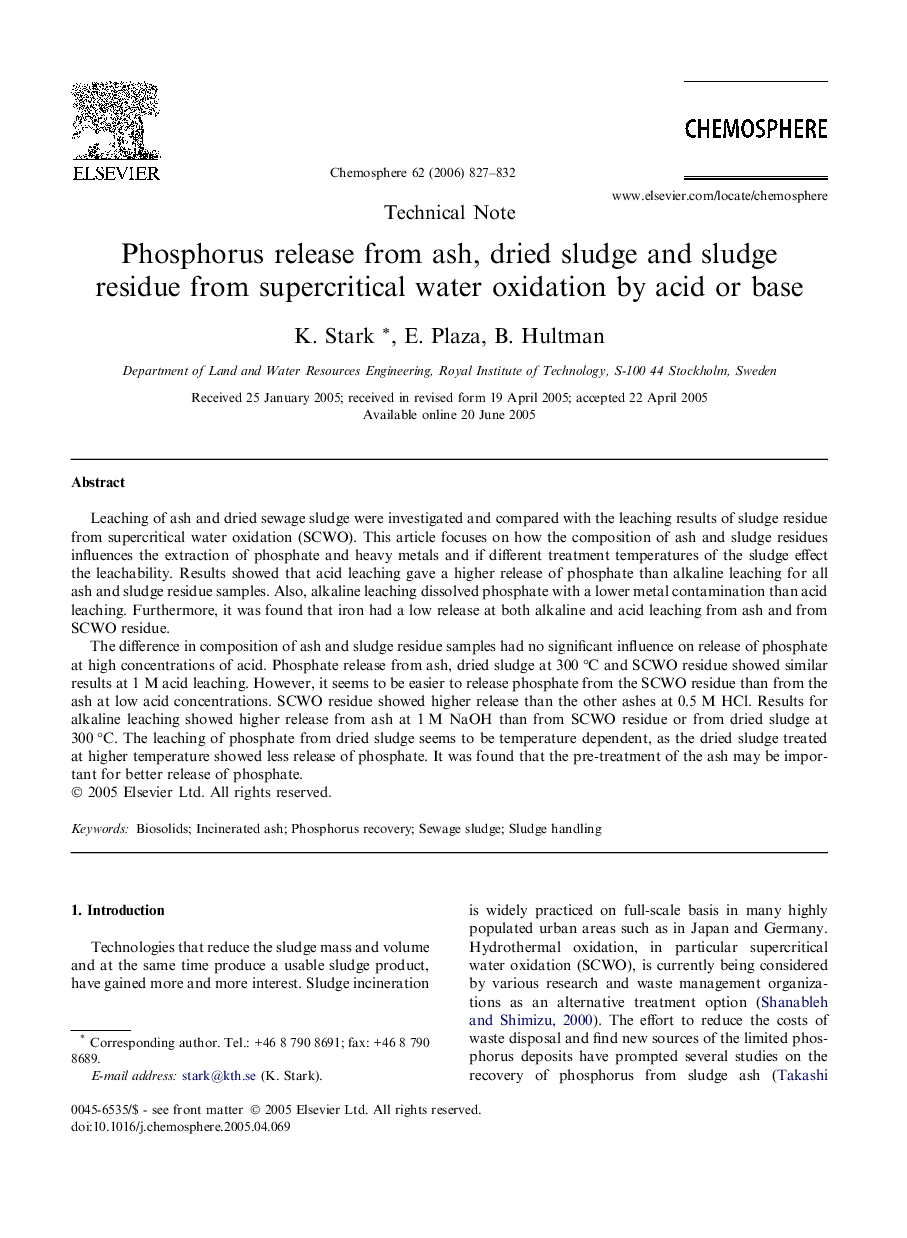| Article ID | Journal | Published Year | Pages | File Type |
|---|---|---|---|---|
| 4416859 | Chemosphere | 2006 | 6 Pages |
Leaching of ash and dried sewage sludge were investigated and compared with the leaching results of sludge residue from supercritical water oxidation (SCWO). This article focuses on how the composition of ash and sludge residues influences the extraction of phosphate and heavy metals and if different treatment temperatures of the sludge effect the leachability. Results showed that acid leaching gave a higher release of phosphate than alkaline leaching for all ash and sludge residue samples. Also, alkaline leaching dissolved phosphate with a lower metal contamination than acid leaching. Furthermore, it was found that iron had a low release at both alkaline and acid leaching from ash and from SCWO residue.The difference in composition of ash and sludge residue samples had no significant influence on release of phosphate at high concentrations of acid. Phosphate release from ash, dried sludge at 300 °C and SCWO residue showed similar results at 1 M acid leaching. However, it seems to be easier to release phosphate from the SCWO residue than from the ash at low acid concentrations. SCWO residue showed higher release than the other ashes at 0.5 M HCl. Results for alkaline leaching showed higher release from ash at 1 M NaOH than from SCWO residue or from dried sludge at 300 °C. The leaching of phosphate from dried sludge seems to be temperature dependent, as the dried sludge treated at higher temperature showed less release of phosphate. It was found that the pre-treatment of the ash may be important for better release of phosphate.
